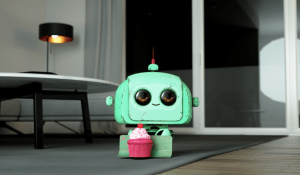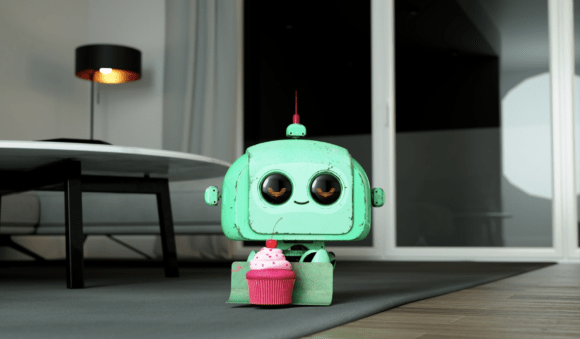

Source:
- The Yuan, Published on October 25th, 2024.
By Zorina Alliata
ALEXANDRIA, VIRGINIA – In recent years, artificial intelligence (AI) has grown and developed into something much bigger than most people could have ever expected. Jokes about robots living among humans no longer seem so harmless, and the average person began to develop a new awareness of AI and all its uses. Unfortunately, however – as is often a human tendency – people became hyper-fixated on the negative aspects of AI, often forgetting about all the good it can do. One should therefore take a step back and remember that humanity is still only in the very early stages of developing real intelligence outside of the human brain, and so at this point AI is almost like a small child that humans are raising.
AI is still developing, growing, and adapting, and like any new tech it has its drawbacks. At one point, people had fears and doubts about electricity, calculators, and mobile phones – but now these have become ubiquitous aspects of everyday life, and it is not difficult to imagine a future in which this is the case for AI as well.
The development of AI certainly comes with relevant and real concerns that must be addressed – such as its controversial role in education, the potential job losses it might lead to, and its bias and inaccuracies. For every fear, however, there is also a ray of hope, and that is largely thanks to people and their ingenuity.
Looking at education, many educators around the world are worried about recent developments in AI. The frequently discussed ChatGPT – which is now on its fourth version – is a major red flag for many, causing concerns around plagiarism and creating fears that it will lead to the end of writing as people know it. This is one of the main factors that has increased the pessimistic reporting about AI that one so often sees in the media.
However, when one actually considers ChatGPT in its current state, it is safe to say that these fears are probably overblown. Can ChatGPT really replace the human mind, which is capable of so much that AI cannot replicate? As for educators, instead of assuming that all their students will want to cheat, they should instead consider the options for taking advantage of new tech to enhance the learning experience. Most people now know the tell-tale signs for identifying something that ChatGPT has written. Excessive use of numbered lists, repetitive language and poor comparison skills are just three ways to tell if a piece of writing is legitimate or if a bot is behind it. This author personally encourages the use of AI in the classes I teach. This is because it is better for students to understand what AI can do and how to use it as a tool in their learning instead of avoiding and fearing it, or being discouraged from using it no matter the circumstances.
Educators should therefore reframe the idea of ChatGPT in their minds, have open discussions with students about its uses, and help them understand that it is actually just another tool to help them learn more efficiently – and not a replacement for their own thoughts and words. Such frank discussions help students develop their critical thinking skills and start understanding their own influence on ChatGPT and other AI-powered tools.
By developing one’s understanding of AI’s actual capabilities, one can begin to understand its uses in everyday life. Some would have people believe that this means countless jobs will inevitably become obsolete, but that is not entirely true. Even if AI does replace some jobs, it will still need industry experts to guide it, meaning that entirely new jobs are being created at the same time as some older jobs are disappearing.
Adapting to AI is a new challenge for most industries, and it is certainly daunting at times. The reality, however, is that AI is not here to steal people’s jobs. If anything, it will change the nature of some jobs and may even improve them by making human workers more efficient and productive. If AI is to be a truly useful tool, it will still need humans. One should remember that humans working alongside AI and using it as a tool is key, because in most cases AI cannot do the job of a person by itself.
Is AI biased?
Why should one view AI as a tool and not a replacement? The main reason is because AI itself is still learning, and AI-powered tools such as ChatGPT do not understand bias. As a result, whenever ChatGPT is asked a question it will pull information from anywhere, and so it can easily repeat old biases. AI is learning from previous data, much of which is biased or out of date. Data about home ownership and mortgages, e.g., are often biased because non-white people in the United States could not get a mortgage until after the 1960s. The effect on data due to this lending discrimination is only now being fully understood.
AI is certainly biased at times, but that stems from human bias. Again, this just reinforces the need for humans to be in control of AI. AI is like a young child in that it is still absorbing what is happening around it. People must therefore not fear it, but instead guide it in the right direction.
For AI to be used as a tool, it must be treated as such. If one wanted to build a house, one would not expect one’s tools to be able to do the job alone – and AI must be viewed through a similar lens. By acknowledging this aspect of AI and taking control of humans’ role in its development, the world would be better placed to reap the benefits and quash the fears associated with AI. One should therefore not assume that all the doom and gloom one reads about AI is exactly as it seems. Instead, people should try experimenting with it and learning from it, and maybe soon they will realize that it was the best thing that could have happened to humanity.
Read the full article below:
Related posts

Source:
- Raconteur, published on November 06th, 2025
Many firms have conducted successful Artificial Intelligence (AI) pilot projects, but scaling them across departments and workflows remains a challenge. Inference costs, data silos, talent gaps and poor alignment with business strategy are just some of the issues that leave organisations trapped in pilot purgatory. This inability to scale successful experiments means AI’s potential for improving enterprise efficiency, decision-making and innovation isn’t fully realised. So what’s the solution?
Although it’s not a magic bullet, an AI operating model is really the foundation for scaling pilot projects up to enterprise-wide deployments. Essentially it’s a structured framework that defines how the organisation develops, deploys and governs AI. By bringing together infrastructure, data, people, and governance in a flexible and secure way, it ensures that AI delivers value at scale while remaining ethical and compliant.
“A successful AI proof-of-concept is like building a single race car that can go fast,” says Professor Yu Xiong, chair of business analytics at the UK-based Surrey Business School. “An efficient AI technology operations model, however, is the entire system – the processes, tools, and team structures – for continuously manufacturing, maintaining, and safely operating an entire fleet of cars.”
But while the importance of this framework is clear, how should enterprises establish and embed it?
“It begins with a clear strategy that defines objectives, desired outcomes, and measurable success criteria, such as model performance, bias detection, and regulatory compliance metrics,” says Professor Azadeh Haratiannezhadi, co-founder of generative AI company Taktify and professor of generative AI in cybersecurity at OPIT – the Open Institute of Technology.
Platforms, tools and MLOps pipelines that enable models to be deployed, monitored and scaled in a safe and efficient way are also essential in practical terms.
“Tools and infrastructure must also be selected with transparency, cost, and governance in mind,” says Efrain Ruh, continental chief technology officer for Europe at Digitate. “Crucially, organisations need to continuously monitor the evolving AI landscape and adapt their models to new capabilities and market offerings.”
An open approach
The most effective AI operating models are also founded on openness, interoperability and modularity. Open source platforms and tools provide greater control over data, deployment environments and costs, for example. These characteristics can help enterprises to avoid vendor lock-in, successfully align AI to business culture and values, and embed it safely into cross-department workflows.
“Modularity and platformisation…avoids building isolated ‘silos’ for each project,” explains professor Xiong. “Instead, it provides a shared, reusable ‘AI platform’ that integrates toolchains for data preparation, model training, deployment, monitoring, and retraining. This drastically improves efficiency and reduces the cost of redundant work.”
A strong data strategy is equally vital for ensuring high-quality performance and reducing bias. Ideally, the AI operating model should be cloud and LLM agnostic too.
“This allows organisations to coordinate and orchestrate AI agents from various sources, whether that’s internal or 3rd party,” says Babak Hodjat, global chief technology officer of AI at Cognizant. “The interoperability also means businesses can adopt an agile iterative process for AI projects that is guided by measuring efficiency, productivity, and quality gains, while guaranteeing trust and safety are built into all elements of design and implementation.”
A robust AI operating model should feature clear objectives for compliance, security and data privacy, as well as accountability structures. Richard Corbridge, chief information officer of Segro, advises organisations to: “Start small with well-scoped pilots that solve real pain points, then bake in repeatable patterns, data contracts, test harnesses, explainability checks and rollback plans, so learning can be scaled without multiplying risk. If you don’t codify how models are approved, deployed, monitored and retired, you won’t get past pilot purgatory.”
Of course, technology alone can’t drive successful AI adoption at scale: the right skills and culture are also essential for embedding AI across the enterprise.
“Multidisciplinary teams that combine technical expertise in AI, security, and governance with deep business knowledge create a foundation for sustainable adoption,” says Professor Haratiannezhadi. “Ongoing training ensures staff acquire advanced AI skills while understanding associated risks and responsibilities.”
Ultimately, an AI operating model is the playbook that enables an enterprise to use AI responsibly and effectively at scale. By drawing together governance, technological infrastructure, cultural change and open collaboration, it supports the shift from isolated experiments to the kind of sustainable AI capability that can drive competitive advantage.
In other words, it’s the foundation for turning ambition into reality, and finally escaping pilot purgatory for good.

The Open Institute of Technology (OPIT) is the perfect place for those looking to master the core skills and gain the fundamental knowledge they need to enter the exciting and dynamic environment of the tech industry. While OPIT’s various degrees and courses unlock the doors to numerous careers, students may not know exactly which line of work they wish to enter, or how, exactly, to take the next steps.
That’s why, as well as providing exceptional online education in fields like Responsible AI, Computer Science, and Digital Business, OPIT also offers an array of career-related services, like the Peer Career Mentoring Program. Designed to provide the expert advice and support students need, this program helps students and alumni gain inspiration and insight to map out their future careers.
Introducing the OPIT Peer Career Mentoring Program
As the name implies, OPIT’s Peer Career Mentoring Program is about connecting students and alumni with experienced peers to provide insights, guidance, and mentorship and support their next steps on both a personal and professional level.
It provides a highly supportive and empowering space in which current and former learners can receive career-related advice and guidance, harnessing the rich and varied experiences of the OPIT community to accelerate growth and development.
Meet the Mentors
Plenty of experienced, expert mentors have already signed up to play their part in the Peer Career Mentoring Program at OPIT. They include managers, analysts, researchers, and more, all ready and eager to share the benefits of their experience and their unique perspectives on the tech industry, careers in tech, and the educational experience at OPIT.
Examples include:
- Marco Lorenzi: Having graduated from the MSc in Applied Data Science and AI program at OPIT, Marco has since progressed to a role as a Prompt Engineer at RWS Group and is passionate about supporting younger learners as they take their first steps into the workforce or seek career evolution.
- Antonio Amendolagine: Antonio graduated from the OPIT MSc in Applied Data Science and AI and currently works as a Product Marketing and CRM Manager with MER MEC SpA, focusing on international B2B businesses. Like other mentors in the program, he enjoys helping students feel more confident about achieving their future aims.
- Asya Mantovani: Asya took the MSc in Responsible AI program at OPIT before taking the next steps in her career as a Software Engineer with Accenture, one of the largest IT companies in the world, and a trusted partner of the institute. With a firm belief in knowledge-sharing and mutual support, she’s eager to help students progress and succeed.
The Value of the Peer Mentoring Program
The OPIT Peer Career Mentoring Program is an invaluable source of support, inspiration, motivation, and guidance for the many students and graduates of OPIT who feel the need for a helping hand or guiding light to help them find the way or make the right decisions moving forward. It’s a program built around the sharing of wisdom, skills, and insights, designed to empower all who take part.
Every student is different. Some have very clear, fixed, and firm objectives in mind for their futures. Others may have a slightly more vague outline of where they want to go and what they want to do. Others live more in the moment, focusing purely on the here and now, but not thinking too far ahead. All of these different types of people may need guidance and support from time to time, and peer mentoring provides that.
This program is also just one of many ways in which OPIT bridges the gaps between learners around the world, creating a whole community of students and educators, linked together by their shared passions for technology and development. So, even though you may study remotely at OPIT, you never need to feel alone or isolated from your peers.
Additional Career Services Offered by OPIT
The Peer Career Mentoring Program is just one part of the larger array of career services that students enjoy at the Open Institute of Technology.
- Career Coaching and Support: Students can schedule one-to-one sessions with the institute’s experts to receive insightful feedback, flexibly customized to their exact needs and situation. They can request resume audits, hone their interview skills, and develop action plans for the future, all with the help of experienced, expert coaches.
- Resource Hub: Maybe you need help differentiating between various career paths, or seeing where your degree might take you. Or you need a bit of assistance in handling the challenges of the job-hunting process. Either way, the OPIT Resource Hub contains the in-depth guides you need to get ahead and gain practical skills to confidently move forward.
- Career Events: Regularly, OPIT hosts online career event sessions with industry experts and leaders as guest speakers about the topics that most interest today’s tech students and graduates. You can join workshops to sharpen your skills and become a better prospect in the job market, or just listen to the lessons and insights of the pros.
- Internship Opportunities: There are few better ways to begin your professional journey than an internship at a top-tier company. OPIT unlocks the doors to numerous internship roles with trusted institute partners, as well as additional professional and project opportunities where you can get hands-on work experience at a high level.
In addition to the above, OPIT also teams up with an array of leading organizations around the world, including some of the biggest names, including AWS, Accenture, and Hype. Through this network of trust, OPIT facilitates students’ steps into the world of work.
Start Your Study Journey Today
As well as the Peer Career Mentoring Program, OPIT provides numerous other exciting advantages for those who enroll, including progressive assessments, round-the-clock support, affordable rates, and a team of international professors from top universities with real-world experience in technology. In short, it’s the perfect place to push forward and get the knowledge you need to succeed.
So, if you’re eager to become a tech leader of tomorrow, learn more about OPIT today.
Have questions?
Visit our FAQ page or get in touch with us!
Write us at +39 335 576 0263
Get in touch at hello@opit.com
Talk to one of our Study Advisors
We are international
We can speak in:


